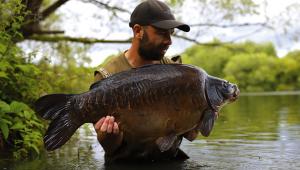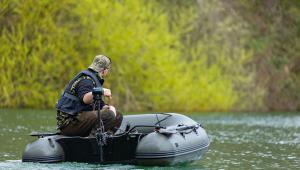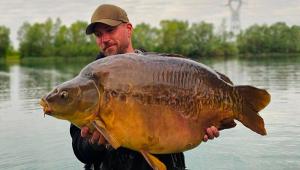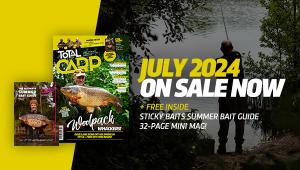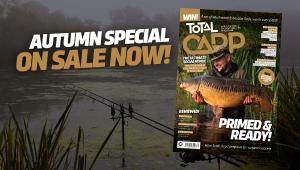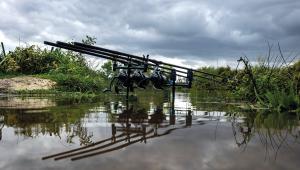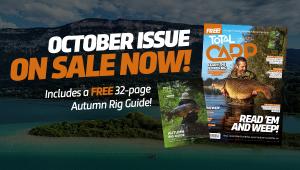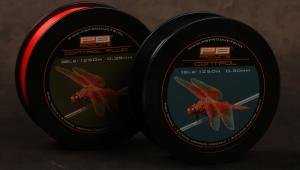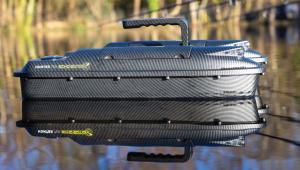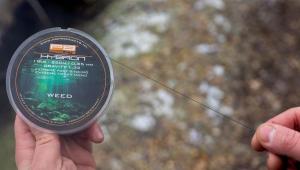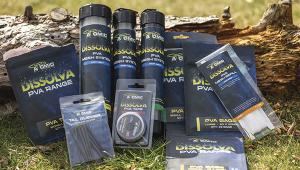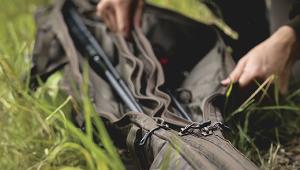Margin Fishing with Lance Barton
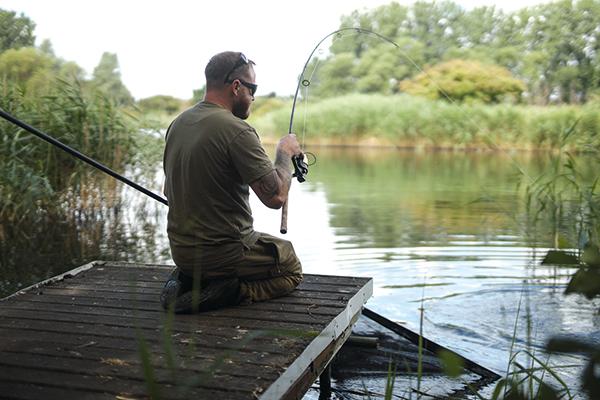
Margin fishing has always been a tactic that I enjoy and it’s an approach that I hold very close to my heart. After all, is there anything better than watching your quarry up close and personal? I was brought up around shooting and hunting and I can recall many an occasion where I’ve carefully stalked close to an animal, yet it doesn’t know I’m there. Those are the moments that I live for, completely natural, unspoilt, and you’re there watching something wild that’s acting completely as it should, undisturbed, unaffected, and peacefully going about its business.
That’s a situation that makes the hair on the back of my neck stand up and the adrenalin course, there is nothing left for the imagination. It’s there in front of you, and all that’s left is for you to take it all in, learning anything you can in the process, often reflecting and realising just what has happened after the moment. It’s an almost primal feeling I get while stalking, you’re setting a trap and getting the opportunity to watch your quarry spring it live, in front of your very own eyes.
Edge fishing gives me all the above, it gives me the opportunity to pit my wits against a certain individual carp, or multiple carp, hopefully without them knowing I’m there, with me intently watching every movement they make.
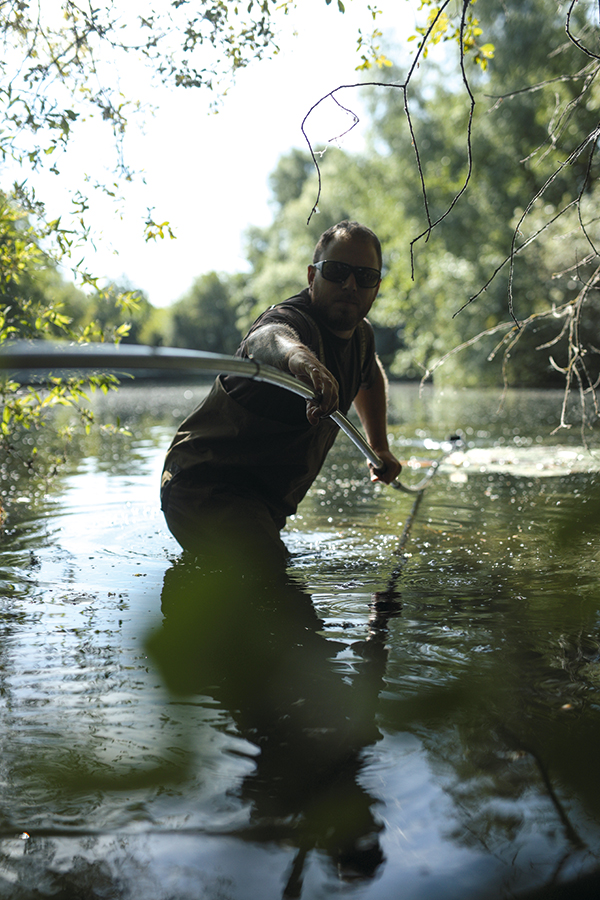 As we all know, margin/edge fishing is seasonal. In the spring as the temperatures rise the carp start to search out the warmer areas, with the surface layers and shallower water being the first places they’ll head to warm up. Now this isn’t to say that carp won’t use certain margins through the colder months, but 99.9 per cent of my stalking happens between April and October. As the carp wake up from their winter slumber, they are numbed, slower than normal, their senses aren’t as in tune and that makes them vulnerable as they’re hungry.
As we all know, margin/edge fishing is seasonal. In the spring as the temperatures rise the carp start to search out the warmer areas, with the surface layers and shallower water being the first places they’ll head to warm up. Now this isn’t to say that carp won’t use certain margins through the colder months, but 99.9 per cent of my stalking happens between April and October. As the carp wake up from their winter slumber, they are numbed, slower than normal, their senses aren’t as in tune and that makes them vulnerable as they’re hungry.
The first signs of carp in the edge are as obvious as simply seeing them there, but that doesn’t always mean they are feeding yet, and often the first signs of them feeling hungry and feeding in earnest can be weeks after the first sighting of them in close. Those first little dusted off spots will start to appear, small gravel spots that are visible amongst the previous autumn’s leaf litter, or maybe some flecked silt spots as the snail shells are tuned over. These are often very small spots but they will be the areas that I introduce small handfuls of subtle feed to first, but we will go into that more later.
Depending on the lake I’m fishing and what targets I have for that year, I will normally start on the water I intend to target for at least that spring and to tune in and target a particular fish. Being able to watch the carp can give you a massive edge to finding where a particular carp could be, where it’s spending its time, at what times of day, and on some occasions you can even learn what time of the day it likes to feed. This is all information that you would never be able to glean if you were fishing out in the pond.
Success in edge fishing comes down to the effort you put in, it’s very much a visual approach, and the more you look, the more you will find. Lapping the lake multiple times in a day is the norm, checking baited spots repeatedly until an opportunity presents itself. There really is nothing better than sliding the Polaroids on to your head, over your eyes and being greeted by tails waving up over your baited spot.
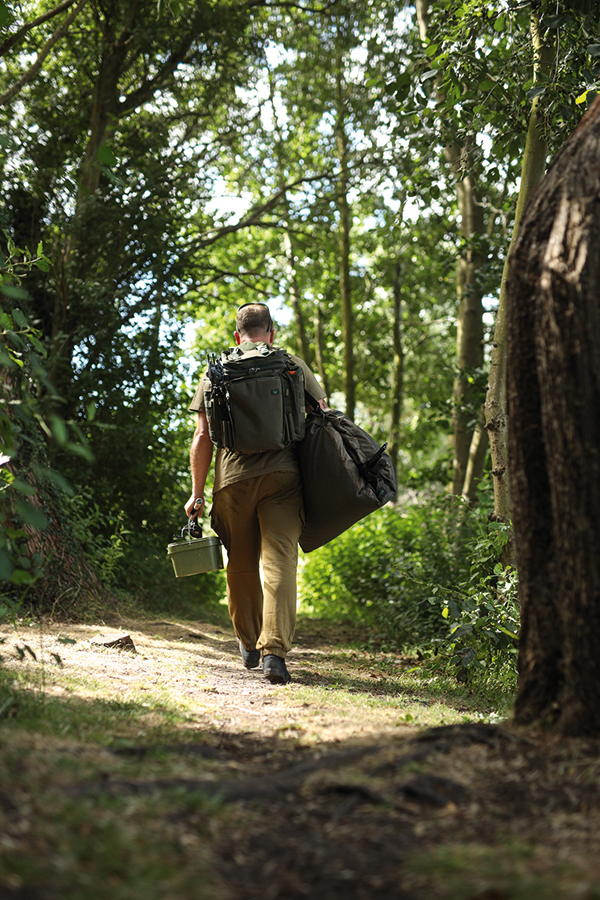 My baiting approach for the edge varies massively from venue to venue, and also the time of year. In fact, while out fishing for this feature I came across a hurdle that I thought would be worth talking about. I’d walked around the lake a couple of times baiting spots with crushed nuts and particles, every time I checked a spot EVERYTHING had gone and on most occasions no carp were to be seen. Rudd (and thousands of them) were obliterating the small food items and even picking up and carrying the larger items off. I only really had one option and that was to use a bigger bait, in this case straight 16mm boilies. Now this did the trick, but it goes against a lot of the reasons I bait how I do, as under normal circumstances there aren’t 10,000 ravenous rudd over every spot!
My baiting approach for the edge varies massively from venue to venue, and also the time of year. In fact, while out fishing for this feature I came across a hurdle that I thought would be worth talking about. I’d walked around the lake a couple of times baiting spots with crushed nuts and particles, every time I checked a spot EVERYTHING had gone and on most occasions no carp were to be seen. Rudd (and thousands of them) were obliterating the small food items and even picking up and carrying the larger items off. I only really had one option and that was to use a bigger bait, in this case straight 16mm boilies. Now this did the trick, but it goes against a lot of the reasons I bait how I do, as under normal circumstances there aren’t 10,000 ravenous rudd over every spot!
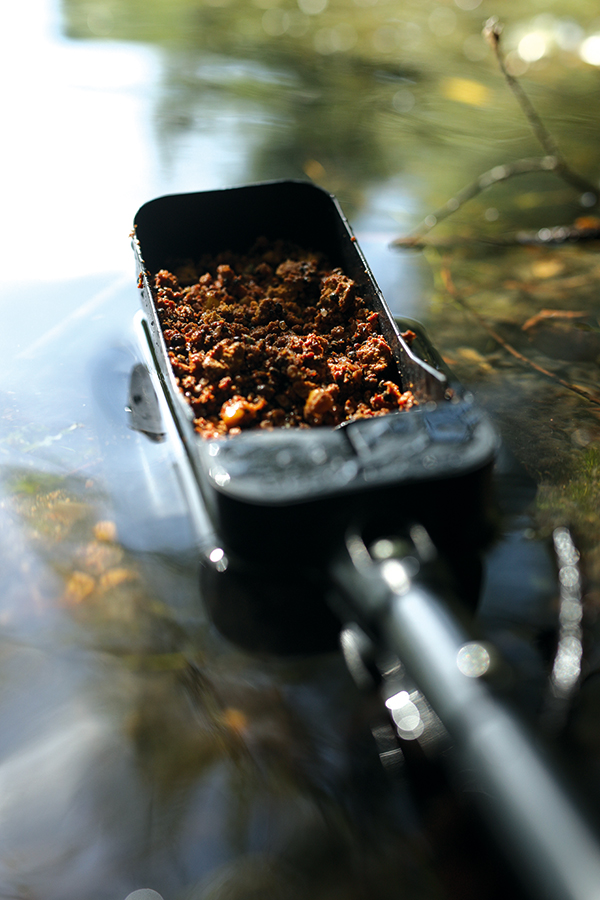 My main bait mixes for priming edge spots usually consist of lots of smaller items, with attractive powders and food liquids also featuring heavily. The main aim is to preoccupy the carp for prolonged periods of time; after all, on a large lake it could be hours before I manage to get back and check a baited spot, so this sort of approach will hold fish for a lot longer than say the above approach of whole boilies, that could be eaten in a matter of minutes. A blend of hempseed, small pellets, crushed tiger nuts and pigeon conditioner makes up the base of my mixes on most occasions, with the powders and liquids being added as I see fit. I have also used groundbait or even simply just the powders and liquids on their own. Realistically, carp are never going to be able to clean you out using this, as there is always going to be attraction lingering around the spot, or morsels of food under stones, or buried in the silt.
My main bait mixes for priming edge spots usually consist of lots of smaller items, with attractive powders and food liquids also featuring heavily. The main aim is to preoccupy the carp for prolonged periods of time; after all, on a large lake it could be hours before I manage to get back and check a baited spot, so this sort of approach will hold fish for a lot longer than say the above approach of whole boilies, that could be eaten in a matter of minutes. A blend of hempseed, small pellets, crushed tiger nuts and pigeon conditioner makes up the base of my mixes on most occasions, with the powders and liquids being added as I see fit. I have also used groundbait or even simply just the powders and liquids on their own. Realistically, carp are never going to be able to clean you out using this, as there is always going to be attraction lingering around the spot, or morsels of food under stones, or buried in the silt.
One thing I am convinced of is that once the fish have woken up and are using the margins regularly, they are on edge. In my opinion they are fully aware that we as humans bring a certain threat to them, so doing everything I can to conceal my presence is important. Not only in the obvious way, like wearing camo or dull clothing, but in being mindful of my footfalls too, as sounds carry very easily underwater, and not only in terms of vibration caused by each step but in our voices also. My phone is always on silent, and I always stalk alone, (other than when shooting a feature obviously!).
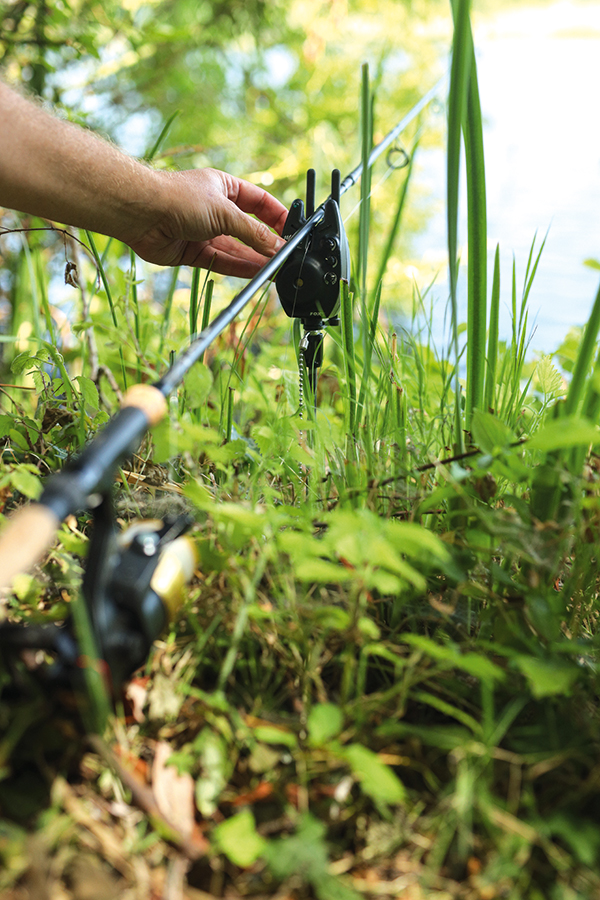 I’ve witnessed carp that I know for sure have absolutely no clue that I’m there and with no rigs on the spot, feeding cautiously and on edge, flinching and spooking off each other. When I see this sort of behaviour I’ll leave them, introduce more bait and allow their confidence to grow by them feeding freely without the pressure of me standing ominously over the area, or with my 6oz lead sat on the spot.
I’ve witnessed carp that I know for sure have absolutely no clue that I’m there and with no rigs on the spot, feeding cautiously and on edge, flinching and spooking off each other. When I see this sort of behaviour I’ll leave them, introduce more bait and allow their confidence to grow by them feeding freely without the pressure of me standing ominously over the area, or with my 6oz lead sat on the spot.
More often than not, on the next lap, or at some point during the day, week or month this behaviour will stop, and they’ll feed slower and more confidently. It’s a feeling that’s almost a sixth sense of knowing when it’s right to lower the rig in that only comes through experience.
Concealment doesn’t end with your bankside presence; camouflaging the rig end is vital, and I’ll do everything I can to make it as inconspicuous as possible. Everything needs to be as heavy as possible making 100 per cent sure that it’s all pinned to the deck. I’ve recently been using the Sub-Fleck, which is a leadless leader. It’s super-supple and really heavy, which allows it to follow the lake’s contours and it tucks nicely into my inline lead. It’s a product I have become fond of over the testing period.
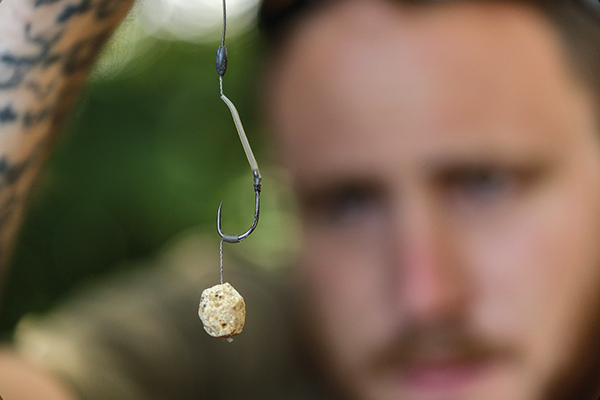 In terms of creating an effective trap big leads are crucial, as I have witnessed on so many occasions fish lifting the lead off the deck and using it to throw the rig. As a minimum I will use a 6oz inline, it may seem a bit overkill but if I could I’d happily use a 10oz! There is no way that any carp is lifting that size lead off the lake bed, with all that weight on a razor-sharp point without it penetrating and the barb sinking deep into its bottom lip. It’s really interesting how they react to that sort of lead too. It’s almost like they seem shocked by the weight of it, it’s not something that’s used regularly, and I guess that’s what makes it so effective – they just don’t know how to deal with it.
In terms of creating an effective trap big leads are crucial, as I have witnessed on so many occasions fish lifting the lead off the deck and using it to throw the rig. As a minimum I will use a 6oz inline, it may seem a bit overkill but if I could I’d happily use a 10oz! There is no way that any carp is lifting that size lead off the lake bed, with all that weight on a razor-sharp point without it penetrating and the barb sinking deep into its bottom lip. It’s really interesting how they react to that sort of lead too. It’s almost like they seem shocked by the weight of it, it’s not something that’s used regularly, and I guess that’s what makes it so effective – they just don’t know how to deal with it.
As I briefly mentioned, a sharp hook is important, but it’s worth pointing out that I don’t want anything sharpened within an inch of its life. Normally I will simply take a hook from the pack and pick the sharpest one I can find. I’ve watched sharpened hooks on rigs in the edge get done a couple of times and wondered what had gone wrong, and the answer to that question is that the movement from the fish’s pecs is enough to rock the rig around and blunt the hook point.
This takes me nicely on to my hook bait, and very rarely nowadays will I use a balanced bait in the edge. I prefer a heavy hook bait, one that’s going to sit tight to the lake bed amongst multiple fish, without being moved with the water displacement. Often a bait straight out of the bag is more than good enough, that or a heavily glugged hardened hook bait that’s been whittled down.
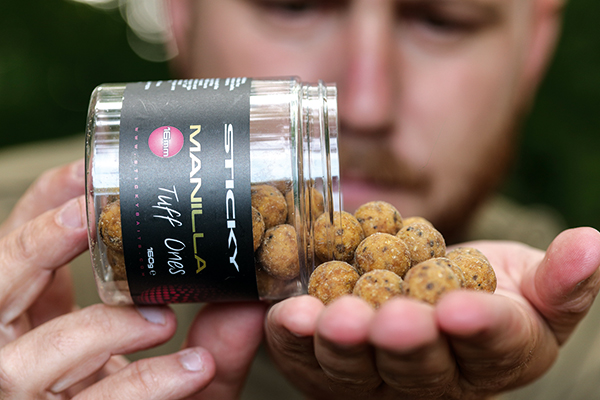 All in all, the end tackle is necessarily strong, because at short range everything is explosive and put under the utmost strain, so it all needs to hold tight.
All in all, the end tackle is necessarily strong, because at short range everything is explosive and put under the utmost strain, so it all needs to hold tight.
Back in the early days I always managed to take way too much kit with me, weighing myself down and finding myself knackered from lugging it all around. Energy that should have gone into fishing was sapped by carrying tackle around the lake, but I have since learnt how to minimise the kit I need, fining everything down so I carry the essentials. In fact, I now enjoy this approach so much I have a dedicated setup I can just pick out the back of the van and roll with when I need it.
Margin fishing has become a massive part of my angling, it is so enjoyable. As I sit here typing I think back to doing this feature on my local day ticket where we watched in pure excitement as one of the big, old, heavily plated special ones fed over the rig, both of us feeling like a couple of over-excited kids. It’s what it is all about, that buzz, that excitement, anything now that gives me that feeling I pay attention to; it’s a special thing and one that shouldn’t be overlooked. Give it a try before the winter sets in, I can almost guarantee you’ll feel the same! 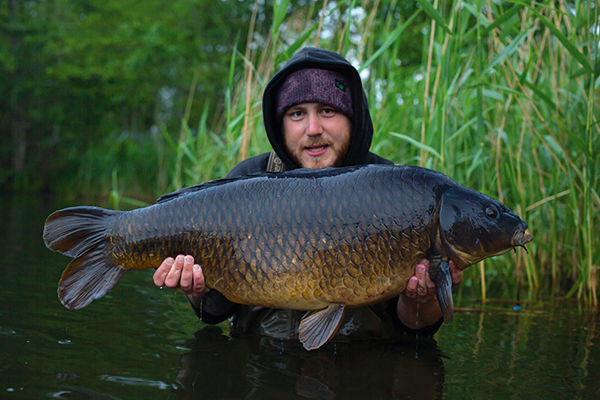
- Log in or register to post comments
